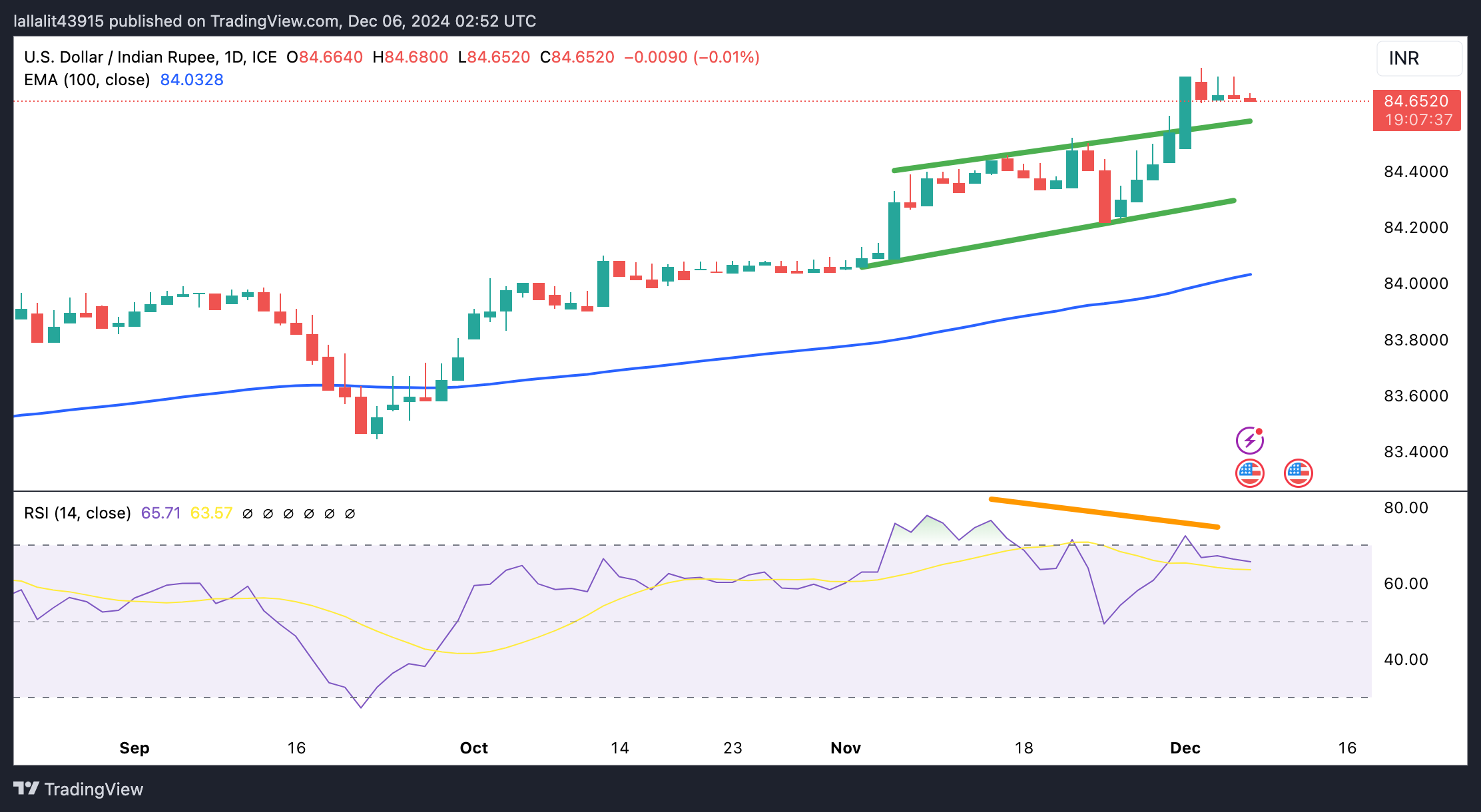提供最佳价差和条件
 了解更多
了解更多
The Indian Rupee (INR) holds steady on Friday after bouncing off from its all-time low level in the previous session. The strength in the domestic markets and the decline in crude oil prices could provide some support to the local currency. Nonetheless, broad-based US Dollar (USD) strength amid the cautious mood could undermine the INR against the Greenback.
The Reserve Bank of India (RBI) Governor Shaktikanta Das will unveil the fifth monetary policy of the current financial year 2024-25 (FY25) on Friday. On the US docket, the US Nonfarm Payrolls (NFP) will be in the spotlight. The Federal Reserve’s (Fed) Michelle Bowman and Austan Goolsbee are scheduled to speak later in the day.
The Indian Rupee trades flat on the day. The USD/INR pair retains its bullish bias as the price is well-supported above the key 100-day Exponential Moving Average (EMA) on the daily timeframe. However, the 14-day Relative Strength Index (RSI) makes lower highs, indicating a bearish divergence. This suggests that the trend is weakening and further consolidation looks favorable in the near term.
The all-time high of 84.77 appears to be a tough nut to crack for the bulls. A decisive break above this level could still take the pair up to the 85.00 psychological level. Further north, the next hurdle emerges at 85.50.
On the other hand, a breach of the resistance-turned-support of 84.60 could see a drop to 84.22, the low of November 25. The key support level to watch is the 84.05-84.00 region, representing the 100-day EMA and psychological mark.

The Indian Rupee (INR) is one of the most sensitive currencies to external factors. The price of Crude Oil (the country is highly dependent on imported Oil), the value of the US Dollar – most trade is conducted in USD – and the level of foreign investment, are all influential. Direct intervention by the Reserve Bank of India (RBI) in FX markets to keep the exchange rate stable, as well as the level of interest rates set by the RBI, are further major influencing factors on the Rupee.
The Reserve Bank of India (RBI) actively intervenes in forex markets to maintain a stable exchange rate, to help facilitate trade. In addition, the RBI tries to maintain the inflation rate at its 4% target by adjusting interest rates. Higher interest rates usually strengthen the Rupee. This is due to the role of the ‘carry trade’ in which investors borrow in countries with lower interest rates so as to place their money in countries’ offering relatively higher interest rates and profit from the difference.
Macroeconomic factors that influence the value of the Rupee include inflation, interest rates, the economic growth rate (GDP), the balance of trade, and inflows from foreign investment. A higher growth rate can lead to more overseas investment, pushing up demand for the Rupee. A less negative balance of trade will eventually lead to a stronger Rupee. Higher interest rates, especially real rates (interest rates less inflation) are also positive for the Rupee. A risk-on environment can lead to greater inflows of Foreign Direct and Indirect Investment (FDI and FII), which also benefit the Rupee.
Higher inflation, particularly, if it is comparatively higher than India’s peers, is generally negative for the currency as it reflects devaluation through oversupply. Inflation also increases the cost of exports, leading to more Rupees being sold to purchase foreign imports, which is Rupee-negative. At the same time, higher inflation usually leads to the Reserve Bank of India (RBI) raising interest rates and this can be positive for the Rupee, due to increased demand from international investors. The opposite effect is true of lower inflation.